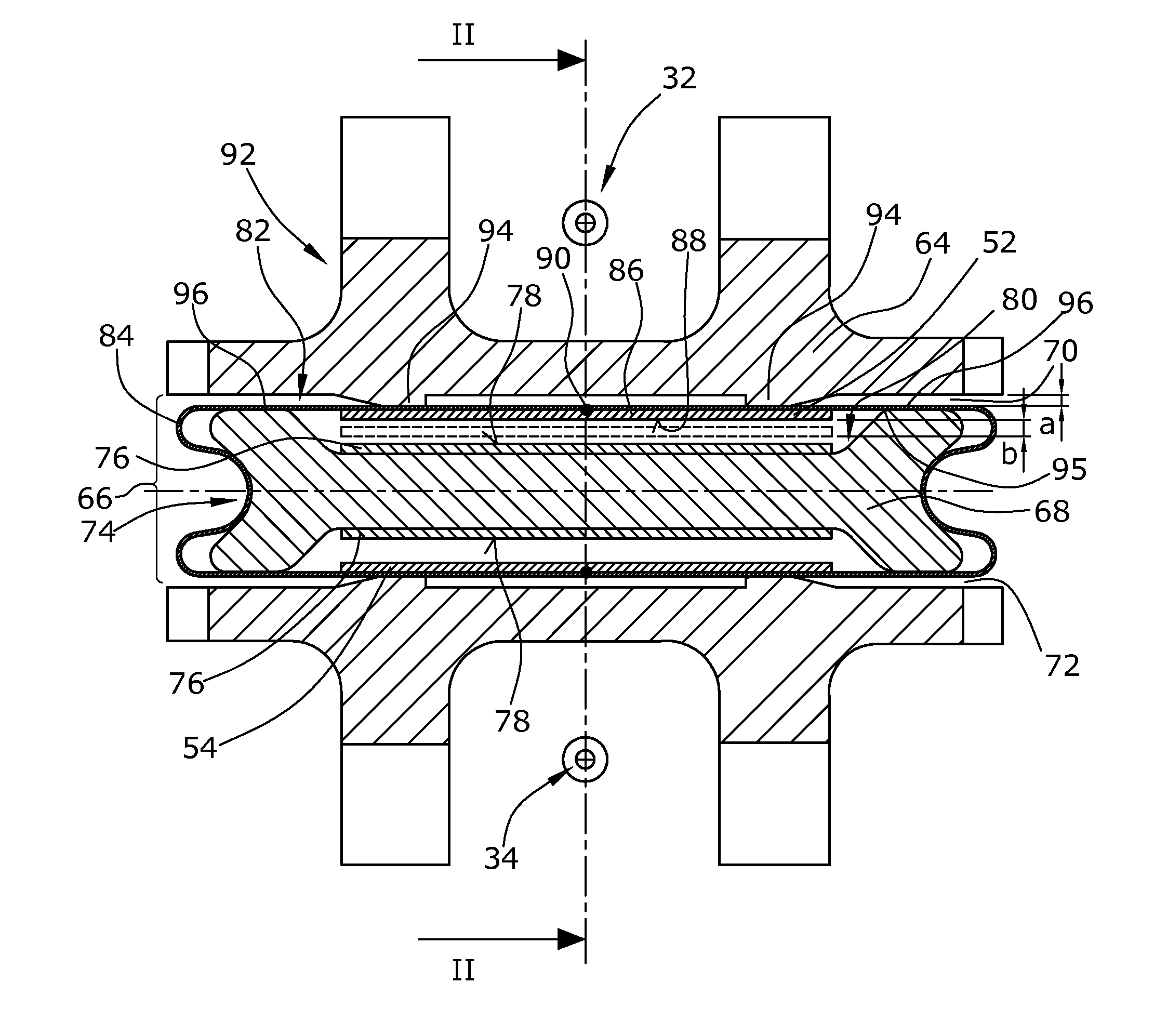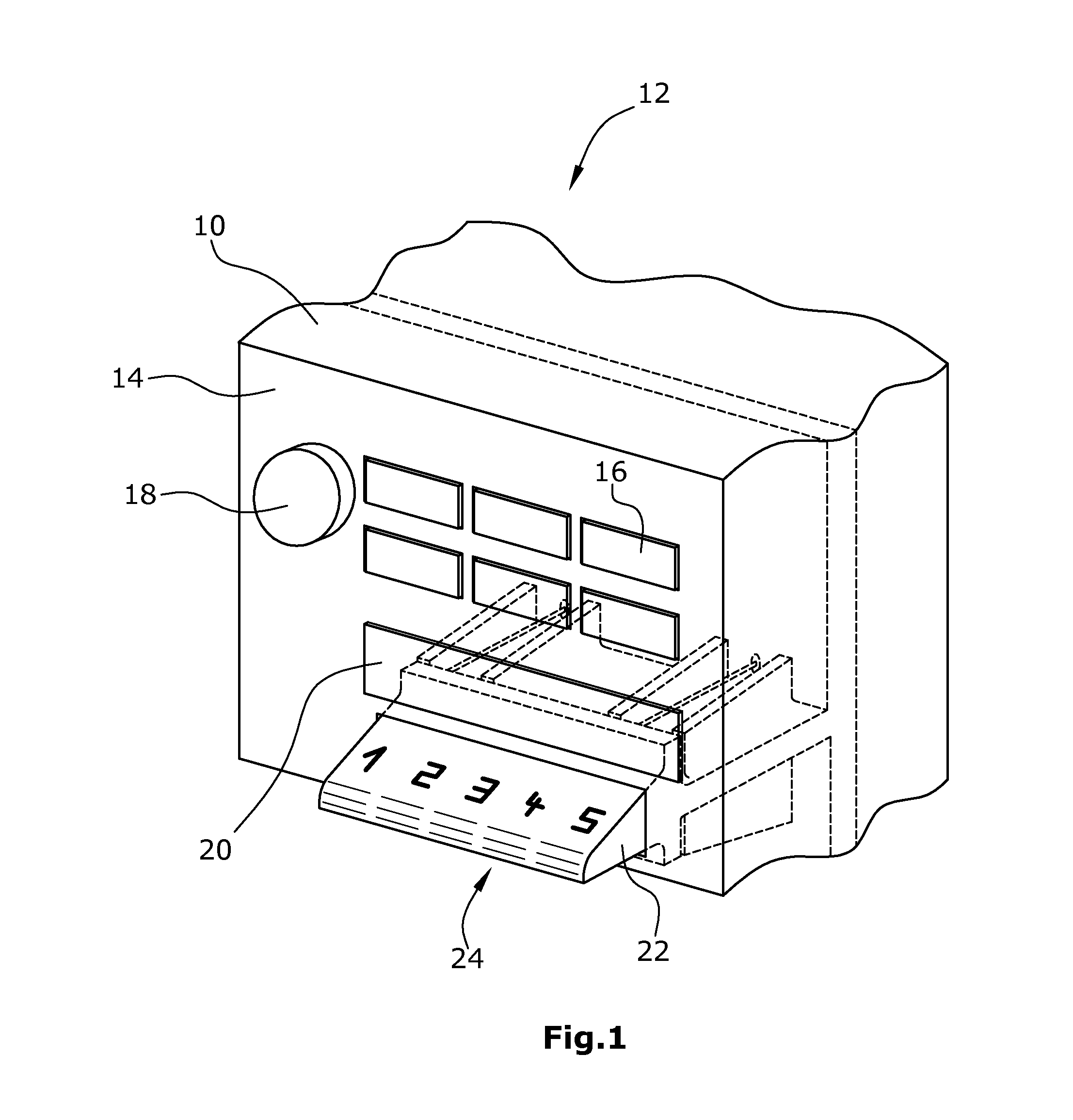Capacitive sensor for detecting a relative movement of two adjacent bodies
- Summary
- Abstract
- Description
- Claims
- Application Information
AI Technical Summary
Benefits of technology
Problems solved by technology
Method used
Image
Examples
Embodiment Construction
[0042]FIG. 1 is a perspective view of a housing 10 of an operating device 12. The housing 10 has a front face 14 with pushbuttons 16, a rotary knob 18, a display unit 20 and an actuation bar 22. The actuation bar 22 forms the actuation end 24 of a key body 26 (see FIG. 2) supported at a supporting body 28 which itself is arranged inside the housing 10.
[0043]A bearing 30 serves to support the key body 26, which bearing has four suspension elements 32, 34 in this embodiment (in FIG. 2, one of the two bearing elements 34 is not visible) that are distributed onto two mutually parallel suspension planes 36, 38. The suspension elements 32, 34 are arranged in pairs at the ends of the key body 26 arranged in the longitudinal direction of the actuation bar 22. They are held clamped both at the supporting body 28 and at the key body 26 so that when force is exerted on the upper side 42 of the actuation bar 22 in the direction of the arrow 40, as well as when force is exerted on the lower side...
PUM
 Login to view more
Login to view more Abstract
Description
Claims
Application Information
 Login to view more
Login to view more - R&D Engineer
- R&D Manager
- IP Professional
- Industry Leading Data Capabilities
- Powerful AI technology
- Patent DNA Extraction
Browse by: Latest US Patents, China's latest patents, Technical Efficacy Thesaurus, Application Domain, Technology Topic.
© 2024 PatSnap. All rights reserved.Legal|Privacy policy|Modern Slavery Act Transparency Statement|Sitemap



